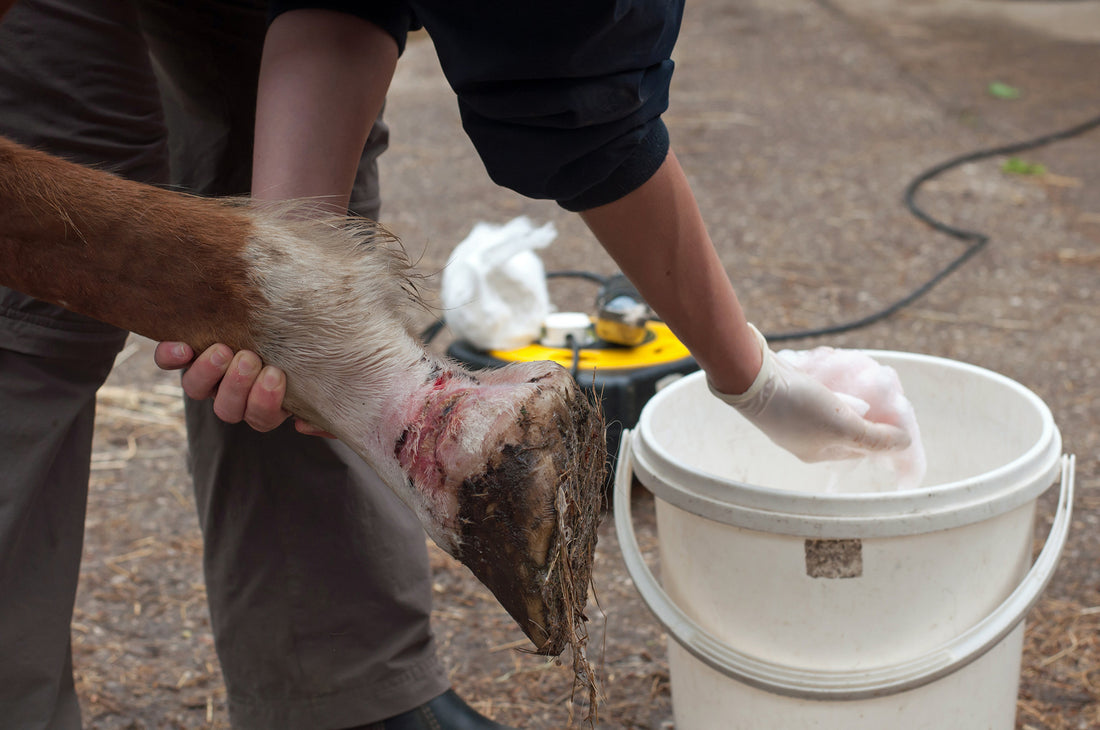Treating mud fever
All horse people know what challenges the changing of the seasons brings: muddy fields and mud fever for the horse.
Mud fever (scratches, dew poisoning) or pastern dermatitis often begins in the heel and climbs upwards the leg. The infected wounds are called mud fever. In severe cases, it can cause swelling and lymphangitis. Mud fever presents in an awkward spot because the area is constantly moving, and it can also be painful.
Rain and humidity enable mud fever to build in horses. Unfortunately, it is impossible to keep the paddocks dry year-round. It would therefore be advisable to avoid unnecessary washing of the legs and just gently brush away the mud. If mud fever is already present, it is necessary to wash and dry the legs carefully every day. The scabs must not be scratched off, and drying should be done by gently pressing. The absolute best treatment for mud fever is to use sheep wool wraps. Lotions are unnecessary when wool’s lanolin treats the skin and removes the scabs. Wool binds moisture, so the legs will stay dry all night. Wool is antiseptic, and it prevents inflammation. VILLAge wool wraps have been used to treat mud fever and pastern infections with good results.
It is recommended to use wool also preventively because it strengthens the skin. Especially horses with white socks on their legs are more prone to mud fever. And if your horse once develops mud fever, it is more likely to repeat. If the situation gets bad and the horse suffers from mud fever, talk to your veterinarian.
Prevention – best cure.


